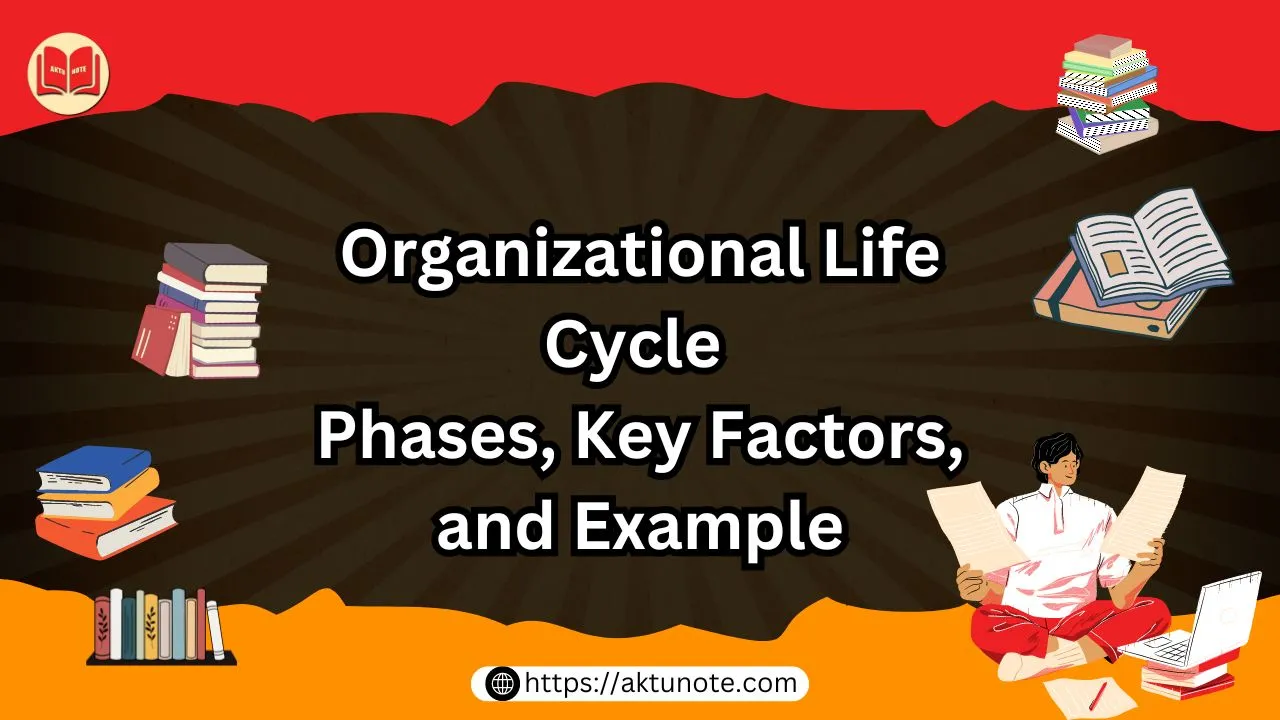Running a business is a lot like raising kids—it starts with excitement and lots of learning, then grows into something bigger with its own set of challenges at every stage. Just as people grow and change over time, organizations follow a life cycle that guides their development from the early days of creation to potential maturity and renewal. Understanding the stages of the organizational life cycle is crucial for business leaders, as it helps them anticipate challenges and opportunities at each phase. So, whether your company is in its “toddler” phase, just learning to walk, or in the “mature adult” phase, managing stability and growth, knowing what’s ahead is half the battle.
The Organizational Life Cycle (OLC) is a concept that describes the distinct stages through which organizations evolve as they grow, mature, and adapt to changes in their internal and external environments. Much like living organisms, organizations progress through a series of phases, each marked by unique challenges, opportunities, and developmental milestones. Understanding the life cycle helps managers and leaders anticipate the changing needs of their organization, align resources, and apply the appropriate management strategies to ensure sustainability. This article explores the phases of the organizational life cycle, the characteristics of each stage, the challenges organizations face during these transitions, and strategies to manage and thrive at every stage.
Phases of the Organizational Life Cycle
The organizational life cycle typically includes five major stages: Start-up, Growth, Maturity, Decline, and Renewal or Death. Each stage presents distinct challenges and opportunities, requiring different managerial approaches and organizational structures to ensure success.
Start-up Stage
The Start-up Stage is the initial phase of an organization’s development, during which a new business or organization is formed, typically by an entrepreneur or small team with a vision or innovative idea. This stage is characterized by uncertainty, limited resources, and a strong focus on establishing the business model, gaining market traction, and surviving early financial challenges.
Characteristics
- Informal organizational structure with few employees.
- High levels of innovation and flexibility.
- Focus on developing a product or service and gaining market acceptance.
- Limited financial resources, often dependent on personal savings, loans, or venture capital.
- Entrepreneurial leadership with a hands-on management approach.
Challenges
Start-ups face high levels of risk due to their lack of established market presence, limited resources, and dependence on securing customers. Cash flow is often a critical concern, and founders must focus on keeping costs low while building a customer base. In addition, start-ups must navigate regulatory requirements, attract investors, and prove the viability of their product or service.
Strategies for Success
Leaders must prioritize clear vision, lean operations, and strong market focus. Agility and the ability to pivot quickly based on customer feedback are key to survival. Building a robust network of customers, investors, and partners can provide the resources and support needed to scale the business.
Growth Stage
The Growth Stage occurs when the organization begins to expand rapidly after achieving some market success. This stage is characterized by increasing revenues, customer acquisition, and the need to scale operations. The company must transition from a small entrepreneurial entity to a more formalized and structured organization.
Characteristics
- Rapid revenue growth and market share expansion.
- Increased hiring and development of functional departments (e.g., marketing, finance, operations).
- Implementation of more formal organizational processes and systems.
- Expansion into new markets, product lines, or geographic regions.
- A shift from informal decision-making to a more hierarchical structure.
Challenges
As the organization grows, it faces challenges related to scalability, operational efficiency, and maintaining quality control. Managing larger teams, more complex operations, and growing customer expectations can strain resources and create bottlenecks. The organization also faces increased competition and the need to differentiate its offerings.
Strategies for Success
Leaders must focus on formalizing structures, processes, and systems that can support growth without stifling innovation. Delegation becomes crucial, and managers must build a strong middle management team to handle day-to-day operations. Ensuring clear communication and alignment across departments is essential for maintaining organizational coherence.
Maturity Stage
The Maturity Stage is characterized by the organization reaching a stable and established market position. Growth rates slow, revenues stabilize, and the company shifts its focus from rapid expansion to optimizing efficiency, maximizing profitability, and maintaining its competitive position.
Characteristics
- Stable revenues and market share, with slower growth rates.
- Well-defined organizational structure and formalized processes.
- Focus on efficiency, cost control, and sustaining profitability.
- Emphasis on refining products and services rather than innovation.
- Large and complex organizational hierarchy, often with multiple layers of management.
Challenges
In the maturity stage, the organization must guard against complacency and stagnation. While the company may enjoy financial stability, it risks losing its competitive edge if it fails to innovate or respond to market changes. Additionally, bureaucracy and operational inefficiencies can hinder responsiveness and adaptability.
Strategies for Success
Leaders should focus on continuous improvement, optimizing processes, and identifying incremental innovations that can keep the organization competitive. Diversification into new markets or product areas may also be necessary to sustain growth. Maintaining a strong organizational culture and encouraging employee engagement can help prevent stagnation.
Decline Stage
The Decline Stage occurs when an organization experiences a significant downturn in performance, market share, or profitability. This stage often results from factors such as market saturation, technological disruption, loss of competitive advantage, or poor management decisions. Without intervention, the organization risks becoming obsolete or unprofitable.
Characteristics
- Decreasing revenues and market share.
- Declining profitability, often leading to cost-cutting measures.
- Loss of innovation and customer interest.
- Shrinking workforce and potential layoffs or divestitures.
- Inward focus and reduced investment in growth initiatives.
Challenges
Organizations in decline face financial pressures, loss of customer confidence, and a demoralized workforce. There may be internal resistance to change, making it difficult to implement necessary turnaround strategies. If unchecked, the decline can lead to bankruptcy or closure.
Strategies for Success
Leaders must implement aggressive turnaround strategies to stabilize the organization. This may involve restructuring, divesting non-core assets, cutting costs, or even repositioning the brand. Reviving innovation, exploring new market opportunities, and re-engaging with customers are critical for reversing the downward trend. In some cases, a change in leadership or ownership may be required.
Renewal or Death Stage
At the Renewal or Death Stage, the organization must make a decisive choice: either undergo a renewal process to revitalize and reposition itself or face closure or acquisition. Renewal involves strategic reinvention, while death refers to the dissolution or sale of the organization.
Renewal Characteristics
- Reinvestment in innovation, new technologies, or new markets.
- Organizational restructuring or leadership change to drive transformation.
- Focus on customer re-engagement and revitalizing the brand.
- Diversification of product lines or entry into emerging markets.
- Adoption of new business models or technologies to remain competitive.
Death Characteristics
- Continued decline in revenues, profitability, and market relevance.
- Inability to adapt to market changes or competition.
- Final decisions regarding sale, merger, or liquidation of the company.
Challenges
Renewal requires a willingness to take bold actions, disrupt existing business models, and invest in new capabilities. However, internal resistance and financial constraints may limit the organization’s ability to execute these strategies. For companies facing closure, the challenge is to manage the exit process in a way that minimizes losses and fulfills obligations to stakeholders.
Strategies for Success
In the renewal phase, leaders must focus on strategic transformation, driving innovation, and pursuing new growth opportunities. They may consider mergers, acquisitions, or partnerships to access new markets or technologies. In the death stage, leadership must prioritize transparency and fairness in managing the closure or sale process, ensuring that all legal and financial obligations are met.
How to Manage Each Stage of the Organizational Life Cycle
1. Startup Management
During the startup phase, focus on refining your product or service and finding your market fit. Keep costs low, and build a strong team that believes in your vision. This phase requires a lot of energy and adaptability, so be prepared for the unexpected.
2. Growth Management
In the growth phase, invest in scaling your operations and building a strong organizational structure. Keep an eye on your company culture, and don’t let the fast pace of growth lead to poor decision-making. Also, focus on streamlining processes to handle the larger volume of business efficiently.
3. Maturity Management
In the maturity phase, the goal is to protect your market position and optimize profitability. Focus on fine-tuning operations, managing costs, and keeping your core customers happy. However, don’t let your company become complacent—always look for ways to innovate or refresh your offerings.
4. Renewal or Decline Management
If your company is in decline, the key is to innovate and adapt quickly. Invest in new products or explore new markets. If renewal isn’t possible, consider exit strategies like mergers or acquisitions to maintain some value. The key is to stay agile and not be afraid to pivot when needed.
Factors Influencing the Organizational Life Cycle
Several factors can influence the pace and direction of an organization’s progression through its life cycle stages. These factors include:
Industry Dynamics
The rate of technological advancement, market competition, and customer preferences can accelerate or decelerate the organization’s movement through its life cycle. Industries undergoing rapid disruption may push companies to transition quickly from growth to decline.
Leadership and Management
Effective leadership plays a critical role in navigating the challenges of each life cycle stage. Strong leaders can guide organizations through growth, manage complexity in maturity, and implement successful turnaround strategies in decline.
Innovation and Adaptability
Organizations that prioritize innovation and adaptability are more likely to sustain growth and remain competitive. Companies that fail to innovate risk becoming stagnant or obsolete, particularly during the maturity and decline stages.
Financial Resources
Access to capital and effective financial management are essential for scaling operations, investing in new initiatives, and weathering economic downturns. Organizations with strong financial health can better navigate transitions and invest in renewal when necessary.
Examples of Companies in Different Life Cycle Stages
Uber (Startup)
In its early days, Uber was a classic startup—disrupting the taxi industry with a new business model. It faced major challenges like regulatory hurdles and fierce competition but grew rapidly by focusing on customer acquisition and global expansion.
Netflix (Growth)
Netflix experienced explosive growth after transitioning from a DVD rental service to a streaming platform. During this phase, it expanded globally, invested heavily in original content, and scaled its operations to meet growing demand.
Coca-Cola (Maturity)
Coca-Cola has been in the maturity phase for decades. As a leader in the beverage industry, it focuses on maintaining its market share, improving operational efficiency, and innovating slightly with new product variations (like Diet Coke or flavored Coke) to stay relevant.
Kodak (Decline)
Kodak is a well-known example of a company that entered decline because it failed to adapt to digital photography. Although Kodak was a leader in film photography, it couldn’t pivot fast enough when digital technology took over, leading to a sharp decline.
For More Content Check Out :- KMBN 301
Conclusion
Just as people grow from infancy to adulthood, businesses pass through distinct stages of development—startup, growth, maturity, decline, and renewal or death—each presenting its own challenges and opportunities. The Organizational Life Cycle provides a valuable framework for understanding these phases, helping leaders recognize where their company stands and make strategic decisions that support growth, stability, or renewal. Whether navigating the excitement of startup growth, optimizing operations during maturity, or implementing a strategic renewal to avoid decline, understanding this life cycle is key to ensuring long-term sustainability and success in a dynamic business environment. By anticipating the challenges ahead, businesses can allocate resources effectively and steer their organizations in the right direction.

